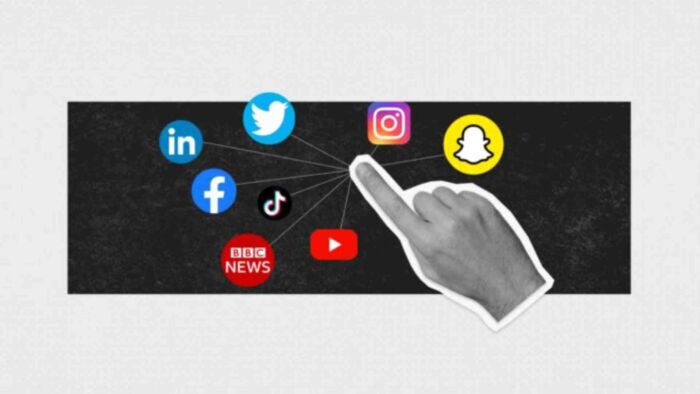Cross channel marketing is the way forward for brands looking to maximize their reach, levels of engagement and overall presence across digital channels. Add influencer to that, and you’ve got a surefire method for tapping into engaged communities throughout multiple channels across the digital hemisphere.
But what you’re probably looking for is how to implement a cross channel marketing strategy, and what are the benefits of influencer marketing? Stick with us on this one, we’ll be looking at closely at cross channel marketing, how to integrate an influencer marketing strategy and some of the top tips for brands looking to get started.
Contents
What is cross channel marketing?
Benefits of using influencers across marketing channels
5 benefits of a cross channel marketing strategy
What is multi-channel marketing?
What is the difference between multi channel and cross channel marketing?
The continued growth of influencer marketing in 2023
Tips for a successful cross channel influencer marketing campaign
What is influencer marketing?
Influencer marketing is a strategy used by brands to promote their products or services through individuals who have established credibility and a significant following on social media platforms. Influencers, also known as content creators, have the ability to sway the opinions and purchasing decisions of their audience due to their expertise, authenticity, and relatability.
Brands collaborate with influencers to create sponsored content that showcases their offerings in a subtle and organic manner, leveraging the influencer’s influence and reach. This form of marketing enables brands to tap into the influencer’s loyal and engaged audience, thereby increasing brand visibility, credibility, and ultimately driving sales.
Influencer marketing often involves partnerships, where influencers receive compensation or free products in exchange for their endorsement. With the rise of social media platforms such as Instagram, YouTube, and TikTok, influencer marketing has become a powerful tool for brands to connect with their target consumers and create a personalized, influential, and persuasive marketing approach.
What is cross channel marketing?
Cross-channel marketing focuses on creating a seamless and integrated experience for customers across different channels and touch-points. It recognizes that customers often engage with multiple channels during their buying journey and aims to provide a consistent and cohesive experience as they transition between these channels.
Benefits of using influencers across marketing channels:
Influencer Marketing and SEO
Influencers can generate high-quality backlinks to your website, which can improve your search engine rankings. Their content and endorsements can drive organic traffic to your site, increasing visibility and brand awareness. Influencers can also create engaging and shareable content that can attract social media mentions, likes, and shares, enhancing your online presence. Collaborating with influencers can help you reach a wider audience and build credibility, as their followers are more likely to trust and engage with recommended products or services.
Influencer Marketing and Social Media Marketing
Influencers have a dedicated and engaged following, which can significantly amplify brand reach and visibility. Secondly, influencers bring authenticity and relatability to marketing campaigns, making them more appealing and trustworthy to their followers. Collaborating with them allows brands to tap into niche markets and target specific demographics, leading to more targeted and effective social media marketing efforts.
Influencer Marketing on Instagram
Influencer marketing on Instagram revolves around collaborating with influential users to create sponsored content in various formats such as photos, videos, stories, and short-form video offering, Reels. Creators leverage their engaged follower base to promote brands’ offerings authentically. Through visually appealing and engaging content, brands can increase visibility, credibility, and audience engagement. Instagram’s popularity as a visual-centric platform makes it an ideal channel for influencer marketing campaigns, allowing brands to reach a broad range of target consumers and drive brand awareness and potential conversions.
Influencer Marketing on TikTok
Influencer marketing on TikTok involves partnering with popular content creators to promote brands’ products or services through creative and short-form videos. These influencers leverage their large and dedicated follower base to create engaging and viral content that resonates with their audience. TikTok’s unique algorithm and vast user base make it an ideal platform for reaching younger demographics and generating widespread brand awareness. Through authentic and entertaining content, influencer marketing on TikTok can help brands connect with their target consumers and drive engagement and conversions.
Influencer Marketing on Twitch
Influencer marketing on Twitch involves collaborating with popular streamers and content creators to promote brands’ products or services to their dedicated and engaged gaming community. Twitch influencers leverage their live streaming and interactive capabilities to engage with their audience in real-time, creating a unique and authentic connection. With Twitch’s focus on gaming and esports, influencer marketing on the platform provides an opportunity to reach a passionate and highly engaged audience, driving brand visibility, engagement, and potential conversions within the gaming industry.
Influencer Marketing on YouTube
YouTube influencers, with their established subscriber base, create engaging and informative videos that showcase brand offerings. They leverage their expertise and authenticity to connect with their audience, driving brand awareness and potentially increasing conversions. YouTube’s wide reach, diverse content genres, and searchability make it an effective platform for influencer marketing campaigns to reach a vast audience and establish long-term brand connections.

5 benefits of a cross channel marketing strategy
1. Increased Reach and Exposure: By utilizing multiple channels such as social media, email, websites, mobile apps, and offline channels, a cross-channel marketing strategy enables businesses to reach a broader audience and gain maximum exposure.
2. Enhanced Customer Engagement: Engaging customers across various channels allows for a more holistic and interactive brand experience. Customers can interact with the brand through different touchpoints, fostering deeper connections and increasing overall engagement.
3. Improved Targeting and Personalization: Cross-channel marketing allows businesses to gather data and insights from different channels, enabling more accurate audience segmentation and targeted messaging. This personalized approach enhances the customer experience and increases the chances of conversion.
4. Consistent Brand Messaging: A cross-channel strategy ensures consistent brand messaging across all channels. This cohesion in branding helps in reinforcing brand identity, building brand trust, and creating a unified customer experience.
5. Optimal Customer Journey: With a cross-channel approach, businesses can provide a seamless customer journey by integrating different channels. Customers can transition effortlessly between channels, ensuring a smooth experience from initial awareness to final purchase, leading to higher customer satisfaction and loyalty.
What is multi-channel marketing?
Multi-channel marketing refers to a marketing strategy where businesses utilize multiple channels to reach and engage with their target audience. These channels can include both online and offline platforms such as websites, social media, email, mobile apps, physical stores, direct mail, and more.
The objective of multi-channel marketing is to provide customers with various touchpoints and options to interact with the brand. It recognizes that customers have different preferences and behaviors when it comes to consuming information and making purchasing decisions. By utilizing multiple channels, businesses can effectively reach customers at different stages of the buying process and cater to their specific needs and preferences.
The key aspect of multi-channel marketing is ensuring consistency and coherence across all channels. This means maintaining a consistent brand message, visual identity, and customer experience regardless of the channel used. It also involves integrating and aligning the different channels to provide a seamless and cohesive customer journey.
Multi-channel marketing allows businesses to maximize their reach, engage customers through their preferred channels, and provide a more personalized and convenient experience. It helps in building brand awareness, driving customer engagement, and ultimately increasing conversions and sales.
What is the difference between multi channel and cross channel marketing?
While cross-channel marketing and multi-channel marketing share similarities, they do have distinct differences. Multi-channel marketing refers to the use of multiple channels to reach and engage with customers, but each channel may operate independently without much integration or coordination. In multi-channel marketing, the focus is on having a presence across various channels to cater to customer preferences.
On the other hand, cross-channel marketing emphasizes the integration and coordination of these channels. It seeks to provide a unified and seamless experience by aligning messaging, branding, and customer data across channels. Cross-channel marketing recognizes that customers may start their journey on one channel and continue on another, and aims to facilitate a smooth transition while maintaining consistency.
The continued growth of influencer marketing in 2023
In 2022 the influencer marketing industry was valued at a record breaking $16.4 billion, and is expected to grow by 29% to $21.1 billion this year. 82% of brand’s leads from influencer marketing are better quality than other campaign types…so why have you still not invested in influencer marketing?
Influencer marketing should be chosen as a marketing channel due to its numerous benefits. It provides access to influencers’ established credibility and trust, allowing brands to leverage their influence and effectively promote products or services. Influencers have a dedicated and engaged audience, providing brands with the opportunity to reach and connect with specific demographics. Collaborating with influencers enables brands to tap into their authentic storytelling abilities, creating genuine connections with their audience and increasing brand awareness. Influencer marketing also offers the potential for creating viral and shareable content, driving organic reach and amplifying brand exposure. Ultimately, influencer marketing can be a powerful tool for brands to enhance their online presence, build credibility, and drive conversions.
Tips for a successful cross channel influencer marketing campaign
Define Clear Objectives
Clearly define your campaign goals and key performance indicators (KPIs) to ensure alignment with your overall marketing strategy. Whether it’s brand awareness, engagement, or conversions, having specific objectives will guide your campaign and measure its success.
Choose Relevant Influencers
Select influencers whose audience aligns with your target market. Look for influencers who have a genuine interest in your industry or product category, as their followers are more likely to be interested in your offerings.
Create a Comprehensive Strategy:
Develop a cohesive strategy that integrates multiple channels effectively. Determine how influencers will promote your brand across different platforms, including social media, blogs, videos, and more. Ensure consistent messaging and branding across all channels.
Focus on Authenticity
Encourage influencers to create authentic content that resonates with their audience. Allow them creative freedom to develop content that aligns with their personal style and voice while highlighting your brand’s key messages.
Foster Genuine Relationships:
Build strong relationships with influencers by fostering open communication, providing support, and valuing their input. Long-term partnerships can lead to more authentic and effective collaborations, as influencers become more familiar with your brand.
Track and Analyze Results:
Monitor the performance of your cross-channel influencer marketing campaign by tracking key metrics and analyzing the data. This will help you assess the success of the campaign and make data-driven decisions for future strategies.
Leverage Cross-Promotion:
Encourage influencers to promote their content across different channels, such as sharing their social media posts on their blog or including links in their YouTube videos. This cross-promotion can extend your campaign’s reach and engagement.
Engage with the Audience:
Encourage influencers to actively engage with their audience by responding to comments, conducting giveaways, or hosting live Q&A sessions. This fosters a sense of community and increases brand interaction.
Monitor Compliance and Disclosure:
Ensure influencers comply with relevant advertising regulations and disclose any sponsored content appropriately. This transparency builds trust with both the influencers’ audience and regulatory bodies.
Continuously Adapt and Improve:
Regularly assess the performance of your campaign, gather feedback, and make adjustments as needed. Adapt to changing trends and consumer behavior to optimize future cross-channel influencer marketing efforts.
— —
Concluding thoughts
Influencer marketing is a powerful tool that enables brands to leverage the credibility and reach of influential individuals on social media platforms. By collaborating with influencers, brands can tap into their engaged audience, increase brand visibility, credibility, and ultimately drive sales. Influencer marketing offers several benefits for other digital channels, such as generating high-quality backlinks for SEO, amplifying brand reach and visibility on social media, and creating authentic connections with target consumers.
Cross-channel marketing, on the other hand, focuses on providing a seamless and integrated experience for customers across different channels and touchpoints. It enables businesses to reach a broader audience, enhance customer engagement, improve targeting and personalization, maintain consistent brand messaging, and optimize the customer journey.
In a world where influencer marketing is expected to continue its growth trajectory, it is crucial for businesses to recognize its potential and incorporate it into their marketing channels. With the right approach and implementation, influencer marketing can be a valuable tool for enhancing brand awareness, building credibility, and driving conversions in today’s digital landscape.
Are you a brand looking to scale using digital and influencer channels? Get in touch today to learn more about how we can help you!





